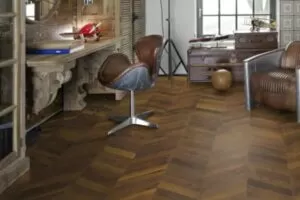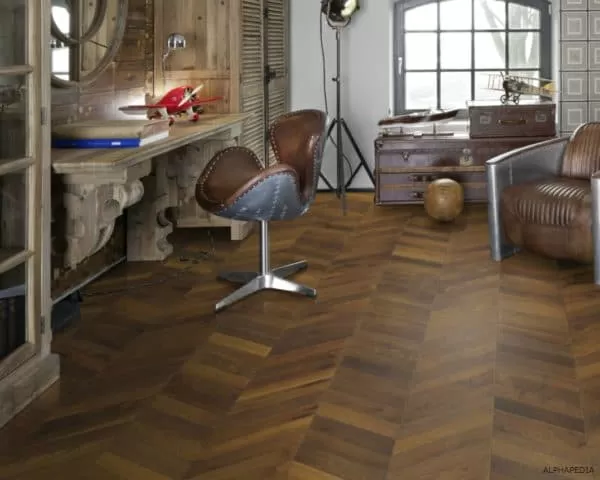What is Wood Texture ?
Wood texture refers to the lines that appear naturally in wood. They are a by-product of the sawing pattern used when the mill first cut the boards from a piece of wood in relation to the angle of the existing growth rings.
What Kind of Texture Does The Wood Have ?
The texture can be divided into three categories: open, medium and closed. This refers to the width and depth of the grain.
- Thick or open-grained woods have a texture that can actually be felt with the fingertips. The open grain of oak can be detected by dragging a nail across the grain and feeling the resistance when the nail meets the edge of the open grain. The open grain family of woods includes oak, elm, walnut, pecan, ash, chestnut and elm.
- Medium grain woods are those that produce a slightly textured surface finish if the grain is not full. The open grain of medium sized woods is very visible, but cannot be felt with the fingertips. Common woods in this category are nut, mahogany and nutmeg, sometimes known as white nut, although nutmeg is rarely seen.
- The texture is smooth or closed grain. The woods in this category have a smooth, flat surface without the individual cracks and crevices of the more open-grained varieties and result in a smooth, non-textured finish without the need for a grain paste filling. The most frequently found woods in this category are maple, birch, cherry, pine, poplar, gum and beech.
White Wood Texture
Normally, the white wood is a spruce and it is cultivated in more humid climates like Scotland, and it grows very fast.
With that rapid growth, the deficiencies, like the grain of the wood, are much more ample, which causes that the boards, once mechanized, are much lighter.
With that comes a less stable material that can be divided, bent and is very difficult to work with.
Pine Wood Texture
Pine wood, are grown in colder climates, and the grain of the wood is much cleaner and tighter, which makes the wood much more tense.
It is much easier to use, it is nice and clean, it looks nice and it is the best quality wood.
Oak Wood Texture
We have two types of oak, white and red.
White oak is much more resistant to rot, and is suitable for water retention applications, boat building, outdoor furniture, etc.
Red oak should only be used for interior parts such as cabinets, indoor furniture, etc.
White oak tends to be more dense, while red oak is slightly lighter and has a more porous and open grain.
White oak tends to be a little more expensive than red oak.
Dark Wood Texture
This texture mainly refers to woods in dark colors such as ebony, walnut, among others.
Light Wood Texture
It refers to the textures of pastel-colored woods with a light tone, such as pine and fir wood, among others.
Old Wood Texture
This texture is characterized by opaque, pale and dull colors, its color tones create the appearance of old and worn wood.
Outdoor Wood Texture
These wood textures are very versatile, you can use them in different places, either furniture, structures and finishes.
The wood textures are always very well seen both outdoors, which we must take into account several aspects, as it requires some maintenance and care.
Wooden Floor Texture
This wood floor texture is very varied because there are unlimited models in the current wood floors. They can be interlocked, with vertical, horizontal or strip orientation, among others.
Wooden Table Texture
Wood is one of the most widely used materials in the world, and almost any type of wood can be used to build furniture. Each type of wood has its own unique characteristics, which in turn can add different degrees of warmth, emphasis and beauty to the surrounding decor.
Wooden Plank Texture
We have this texture in an infinity of models, colors, and textures, can be with light woods, reddish or dark, of different woods like mahogany, oak, pine, among others.
Texture of wood strips
This texture works perfectly to make furniture, floors, accessories among others, we find them of fir wood, pine, raft, to name a few, we find them brushed and unbrushed.
How to Make Wood Texture ?
STEP 1
- To prepare the workspace for painting, cover all surrounding areas with painter’s tape.
STEP 2
- Sanding will remove the vertical fibers from the board and level the blows. Choose a fine grit sandpaper in the 120 to 220 grit range for already smooth surfaces such as MDF, and start with a medium grit sandpaper in the 60 to 100 grit range for thicker design woods. Use a dry cloth to wipe off sanding dust when finished.
STEP 3
- If working with engineered wood, apply white primer to the entire surface of the project with a natural bristle brush or paint roller. Opt for an oil-based primer and cover the top and bottom of the project surface to help minimize warping.
- Dry primer completely according to manufacturer’s instructions. If you are starting with a painted or dark colored drywall, use a paint roller to apply a latex primer to the wall. Dry the primer completely according to the manufacturer’s instructions.
STEP 4
- With the project surface primed, you are ready to apply a base coat of paint that looks like wood. For example, if you want the surface to look like mahogany, opt for coral or dark red. For lighter woods such as walnut or maple, select a gold or orange shade.
- Use a synthetic bristle brush or paint roller to cover the entire surface of the project with paint. When the paint dries, apply a second coat and then let the coat to dry completely.
STEP 5
- Now you will want to mix the enamel for your faux bois painting technique. In a paint mixing jar, combine equal parts of clear acrylic enamel and a second selection of latex paint. Opt for latex paint which is similar to, but some shades darker than the base coat.
- Replace the cap on the bottle and shake the contents to create a translucent tinted glaze. Later, when you apply the glaze, you will want the base coat to remain visible through it.
STEP 6
- Pour the enamel into a paint container and load a synthetic bristle brush (or a roller with a quarter-inch nap roller cover) with the enamel. Working in sections 6 inches wide at a time, apply a thin coat of the enamel that extends the full height of the project surface.
STEP 7
- Create the imitation wood grain in the fresh enamel. Place a wood grain rocker, a hand tool that creates a wood grain texture on painted surfaces, on the top edge of the project surface. Then, slowly drag the rocker vertically downward, swinging the curved head of the tool up and down through the wet glaze until it reaches the opposite end of the project surface. To change the direction of the faux wood grain, simply rotate the rocker and drag it in the opposite direction.
- To create a variety with larger bows and a fine straight grain, place a graining comb (a triangular tool with teeth that mimics a textured grain) along the edge of the section you completed and pull the comb down through the enamel or at a slight angle. This technique should create a more random (and therefore more natural) appearance.
STEP 8
- Use a paper towel to wipe off the rocking chair enamel and comb. Then move to the next 6-inch strip from the project surface and repeat Steps 6 and 7. If you make a mistake, simply re-varnish the affected area and reapply the faux wood grain. Continue this process until the faux wood grain covers the entire surface of the project.
STEP 9
- Let the enamel dry completely.
How to Put Wood Texture ?
- A big part of adding texture to your work with the tools you already have is looking beyond their typical use. Sure, the nail set was made to set nails, but it can also be used to create small holes in the wood.
- A chisel was made to cut small surfaces and remove small wood chips, but it can also be used to create slightly faceted and uneven surfaces.
- I do not encourage you to abuse tools or use them in a dangerous or careless manner. Just keep your eyes open to see what a tool can do for you in terms of adding texture to a surface.
- I didn’t even mention how radio waves, crowbars, carving knives, blowtorches and other tools can also be used to add beautiful texture to wood.
How to Paint Wood Texture?
Step 1
- Gather what you will paint, tape if you want clean edges and a sponge to paint with. I prefer a sponge for each color, so I cut the one I have.
Step 2
- When you are ready to paint, start with your lighter colored paint and wait for it to dry before continuing.
Step 3
- When dry, use the following color, scratch the sponge quickly in a straight line.
Step 4
- Finally, use your darkest color and stripe from side to side in a straight line.
Step 5
- If you want, use the dark color again to give a more wood-like look. Finally, when you are ready, peel the tape if you have used it.
About Other Materials in ALPHAPEDIA
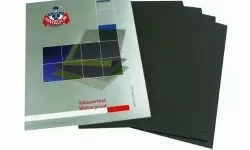
SANDPAPER GRIT: For Metal, Drywall and Wood

LABORATORY EQUIPMENT: Names and Functions
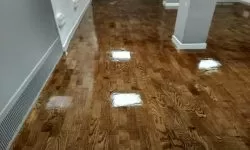
WATER BASED VARNISH: Prices of Different Colors for Wood
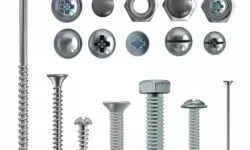
SCREW: Definition, Examples, Types and Sizes For Wood
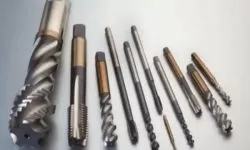
DRILL BIT: Types, Brands, Prices and Offers
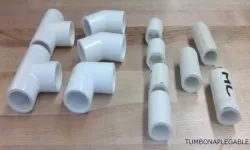
PVC ELBOWS: Types, Prices and Dimensions
Materials Information in ALPHAPEDIA

FERROUS AND NON FERROUS METALS
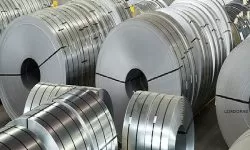
STEEL DENSITY: Definition, Properties and Composition
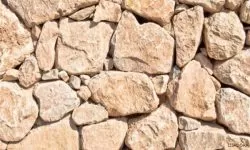
💚 The World of Rough Texture: Definition and Examples
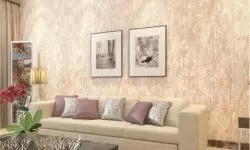
SAND EFFECT PAINTING: For Exteriors and Gotele Type
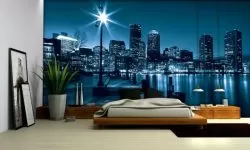
TEXTURIZED WALL: Modern and Interior Walls
Other Topics of Interest in ALPHAPEDIA

FREE MASTER DEGREE IN ADVERTISING
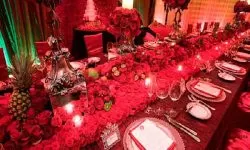
RED WINE COLOR: Psychology, Meaning and Code

FREE BACHELOR DEGREE IN URBANISM

FREE NURSING COURSE

FREE MASTER DEGREE IN CULTURAL MANAGEMENT

BIBLE STUDIES
Wood Texture Image
